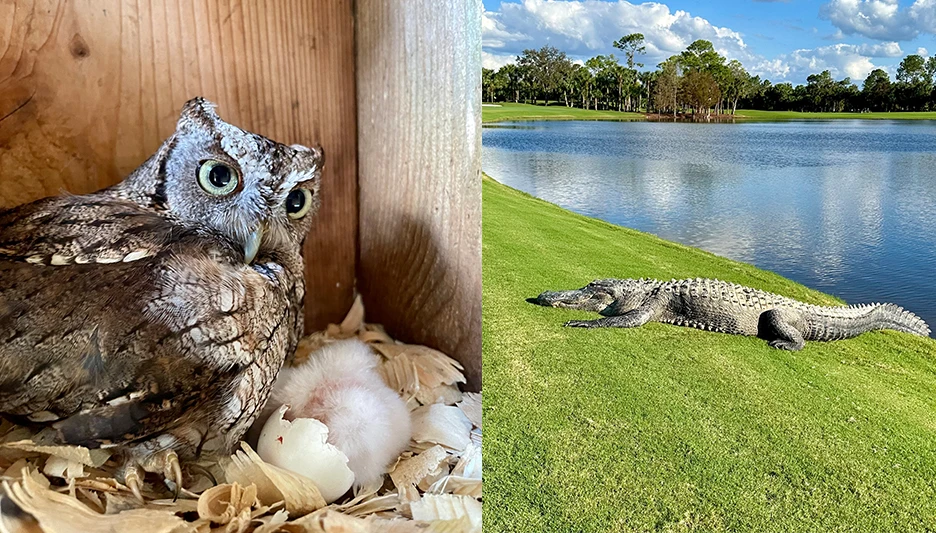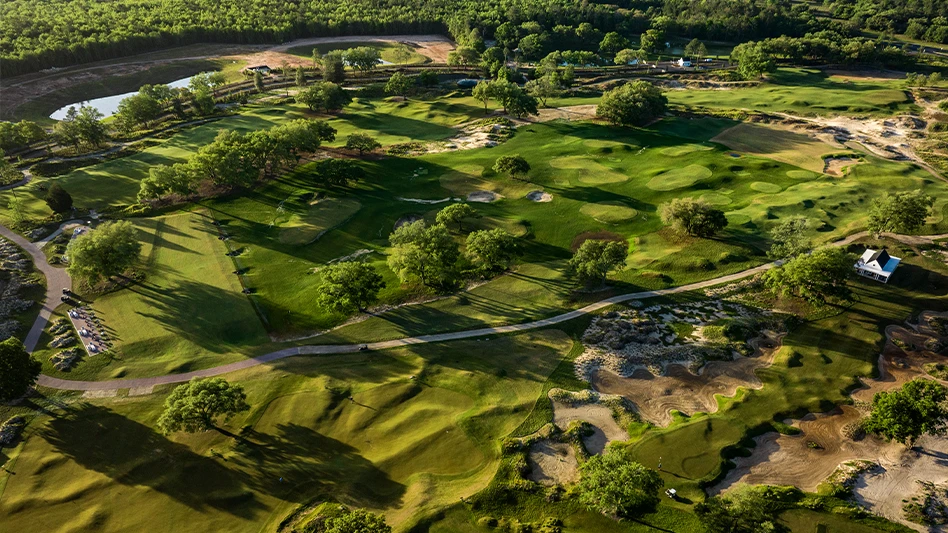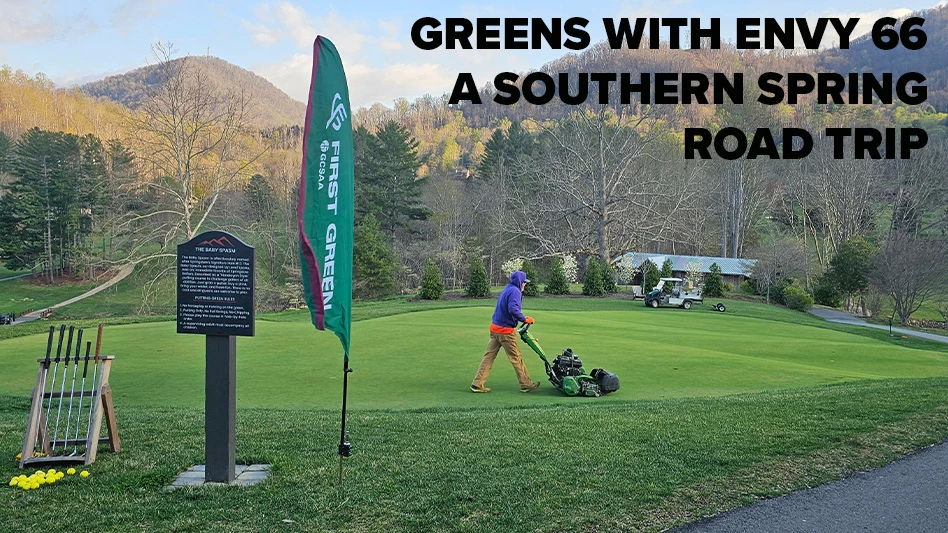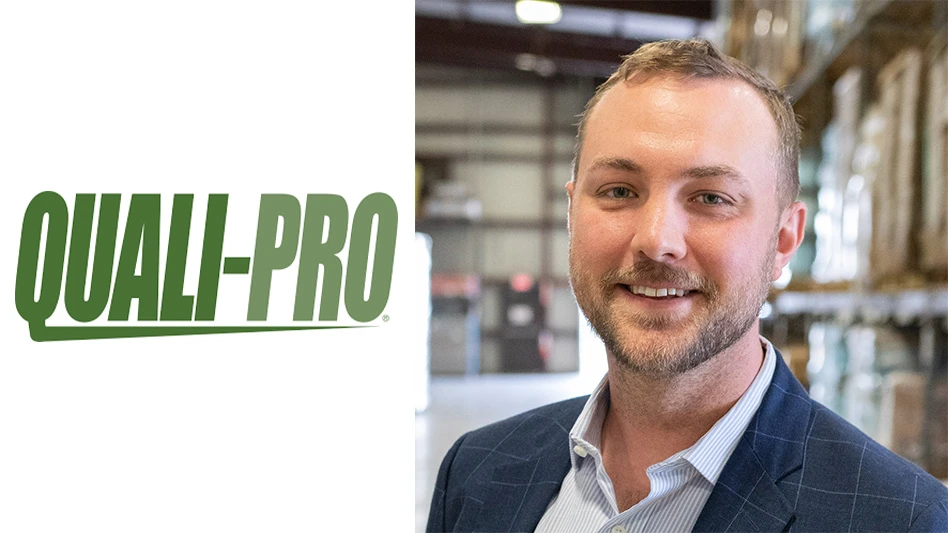
Darren Davis
Birds, deer, coyotes … roosters?
Working outdoors comes with many opportunities, one of them being the potential
to develop relationships with wildlife. A lot of superintendents must learn how
to adapt and manage these relationships while still keeping the golf course in
top shape.
While
birds and deer are common in most parts of the United States, depending on
where a course is located, it might have some more interesting visitors on the
property.
For Derek
Hofer, superintendent at Green Meadow Golf Club in Helena,
Montana, seeing a mother moose and her calf was once a friendly and frequent
occurrence.
“She
would come through once a week,” Hofer says. “She always had this calf. I think
she had maybe three different calves. I don’t know if the calf was born right
here on our place, but you could always see that the calf was just a little
bigger all the time, so it’s kind of like a measuring stick.”
Raccoons,
skunks, eagles and hawks comprise the majority of Hoffer’s regular wildlife on
the course.
It’s
less common to see a moose further south, but Ryan McCavitt, director of
golf course maintenance operations at Bayou Oaks at City Park in New Orleans,
has seen something similarly unique — a group of native roosters.
“They’re fairly domesticated,” he
says. “They’ll come up to your golf cart, they’re not scared of the golfers or
anything anymore.”
In
some cases, the animals are accustomed to seeing and even interacting with
people.
“We’re
here every day and I swear some of the animals notice,” Hoffer says. “They’re
so used to certain things that they’ll clue us off when something weird is
going on.” The animals on Hoffer’s course have had the privilege of hearing his
rendition of Def Leppard songs while he’s out working.
Similarly, Leasha
Schwab, superintendent at Pheasant Run Golf Course in Sharon,
Ontario, enjoys seeing a family of red-tailed hawks as much as they enjoy
seeing her.
“They always have babies and
juvenile hawks are quite funny,” she says. “They’ll grab a golf ball and throw
it around, just being quite silly and they grow up around this and so they’re
quite used to us and will kind of just sit on the ground or they will follow
you around the golf course in the morning.”
While
some courses have novelty visitors, they might not all be appreciated in the
way the moose, roosters and hawks are. Alligators and bears are two big-game
wildlife that have superintendents taking extra precautions to keep their
courses and people safe. “If the alligators get larger than 6 feet, we
typically trap them and have them removed as a safety concern,” McCavitt says.
Darren Davis,
superintendent at Olde Florida Golf Club in Naples, only has the alligators
removed when they pose a direct risk to the golfers and employees. “When they
come out of the water and eat someone’s golf ball and they go back in the
water, it’s time to pull the gator,” he says.
Davis
attributes his no size-limit rule to the fact that his course is not
residential and does not pose a fear to pets or homes. He also must be cautious
and proactive on keeping bears away. “The bears come in occasionally looking
for food, so we put in bear-proof Dumpsters,” Davis says. “That’s the thing in
South Florida.”
While
it’s important to keep the people safe, courses also do their best to keep the
animals safe and comfortable as well. At Bayou Oaks at City Park, buffer zones
are essential for coexisting.
“We
leave acreage between golf and waterways or some native plantings and brush
areas where the animals can hide, sleep and nest,” McCavitt says. “We try to
leave little pockets throughout the golf course and we try to leave the pockets
together so they go from one end of the golf course to another and they’re not
really fully exposed in any given time.”
With
a 300-plus-acre property and most holes bordered by forest, Pheasant Run has
gone a step beyond and added even more additional greenery to benefit wildlife.
“We do really try to put our
wildflower areas at the forefront,” Schwab says. “It’s a project that we’ve
been doing about eight years now and we’ve probably converted between two and
three acres of our property into wildflower naturalized areas.” Pheasant Run
also has beehives and a large vegetable garden that attracts many deer and
groundhogs.
Providing
such a vast landscape of flora and fauna has proved to be increasingly
important as many areas are rapidly developing. Because of this, courses have
seen an increase in the number of wildlife vising their courses, seeking an
oasis.
“My
area is developing rapidly,” Davis says. “I think it’s obvious that wildlife looks
for new homes in corridors that they can survive.”
McCavitt
has seen wildlife return to Bayou Oaks following the construction of the
course. The rebuilt course inside City Park opened in 2017. “With all that
traffic and machinery and stuff, things kind of scattered,” he says. “Then over
the course of the last six or seven years, everything starts migrating back and
kind of getting back in their homesteads.
“Any
time you’re building something on that scale, you’re always scared about
impacting habitat,” McCavitt adds. “I think the park, in particular, and
architect Rees Jones did a really good job of mitigating that and leaving a lot
of natural areas.”
For highly maintained areas such as
fairways and greens, it is still important to be cautious of the wildlife.
Pesticide
usage can have a lasting effect on the animals that come into contact with
them. Hofer is lucky to not battle disease on the course regularly, which
allows him to be more reserved in his pesticide and fungicide usage. “If it’s
flowering time and it’s like late May or early June and there just happens to
be a lot of bees around, pollinators and things, we might choose not to spray
weeds for a while or so,” he says. Hofer prides himself on staying up to date
on GCSAA and agronomy standards, opting to wait to spray to allow the
pollinators opportunity for success.
McCavitt
is also cautious of application rates and water quality on the course.
“We
put down such low doses and such low AI percentages that I don’t think we’re
doing anything that has a negative impact on the environment,” McCavitt says.
“We’re really diligent about just spoon feeding and giving the plants exactly
what they need and not overdoing it. I would gather to say that the water is
leaving the golf course better than it came in but that’s a really hard
measurement because there’s so many different things you can test and measure
on, but I could say that we’re not negatively impacting the water.”
With
the physical beauty of the golf course landscapes, another rare beauty exists —
peacefulness. “In a world where everything seems so crazy all the time, it
brings a peaceful feel to it out here,” Hofer says.
Adds
Davis: “Others don’t have the opportunity to truly walk in my shoes and to see
the beauty of a golf course and truly understand the numerous environmental
benefits not just for wildlife but also for water quality and everything else.”
Despite
having to take some extra measures to ensure that both wildlife and people
remained unharmed, the benefits of being able to coexist often make it worth
it.
“There
are many that have a negative perception, but it’s because they’re unaware of
the positive attributes,” Davis says. “We all coexist. This is certainly their
home as well as our place for enjoyment and exercise but in my over 30 years, there
haven’t been many problems.”
Cassidy Gladieux is a Northeast
Ohio-based writer and frequent Golf Course Industry contributor.
Latest from Golf Course Industry
- Graze, Invited partner for autonomous mowing launch at Gleneagles CC
- New grasses up north?
- From the publisher’s pen: Technology diffusion and turf
- Applications open for 2025 Syngenta Business Institute
- Smart Greens Episode 1: Welcome to the digital agronomy era
- PBI-Gordon promotes Jeff Marvin
- USGA investing $1 million into Western Pennsylvania public golf
- KemperSports taps new strategy EVP





